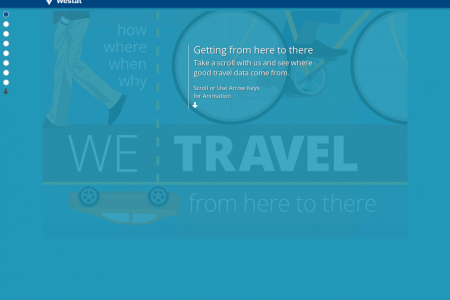
Walkable Urbanism on the Rise
WALKABLE URBANISM MERGING THE GAP BETWEEN CITY AND SUBURB While city and suburbs were a clear distinction in the age of urban sprawl, we're moving more toward "walkable urban" and ... "drivable suburban" spaces. Characteristics of Walkable urban places (WalkUPs): 1 Much higher density and mix of diverse real estate types Connected to surrounding Home, work, school, areas by multiple transportation options, such as bus and rail, bike routes, and stores, and restaurants are within walking distance motor vehicles is the number of WalkUPs in the 30 largest metropolitan areas in the U.S. with a walk score* of at least 70.5 across all of its acreage. 558 O = 1 WalkUP • Walk score is a ranking from 0-100 signifying how easily walkable a location is 46% of the total U.S. population lives in the 30 largest metropolitan areas BENEFITS OF A WALKABLE COMMUNITY Studies show highly walkable areas have clear economic and health benefits. 1 Houses with above average levels of walkability ask for $4,000 to $34,000 more than houses with average levels. 2 There's a 74% premium in rent per square foot of office buildings in walkable areas compared to drivable suburban areas. This is projected to grow even more. Investments in pedestrian safety and attractive street environment have financial benefits. On a 7-point pedestrian environment scale, every 1 point increase in walkability was associated with... 4.9% higher 5.2% higher retail prices retail rents Walkability increases social capital, including involvement in local government and community trust. Greater social capital has been linked to Customers who walk to stores spend more money per week than those who drive, bike, or take public transportation. improved community health and decreased crime rates. People who live in walkable neighborhoods are twice as likely to get the recommended daily amount of physical activity as those who do not. People who live in neighborhoods with sidewalks are 47% more likely to be physically active at least 30 minutes per day. THE PAYOFF OF WALKABLE SPACES Shifting a metro to a more walkable urban space can be costly, but it can also lead to fast economic growth and sprawling development. The most walkable urban metro areas have: Substantially higher wealth measured by Higher percentages of college graduates over 25 years old in the population their Gross Domestic Products (GDP) per capita LGDP Exports minus Imports Consumption Investments Government Spending Education and GDP of Metro Regions Low $80k Walkable Urbanism $70k $60k Tentative Walkable $50k Urbanism $40k Moderate $30k Walkable $20k Urbanism $10k High Walkable Urbanism $0 0% 5% 10% 15% 20% 25% 30% 35% 40% 45% 50% % of Metro Population Age 25 and Over with Bachelor's Degree or Higher $60,400 is the average GDP of the 6 highest-ranked walkable urban metropolitan areas. That's 38% higher than the average in the 10 low-ranked walkable urban metros. Current Ranking of Walkable Urban Metropolitan Areas 6 Seattle Portland Minneapolis Boston Chicago Pittsburgh New York City 4 San Francisco Cleveland Philadelphia Denver Washington, Baltimore DC 8 Atlanta KEY: Moderate Walkable Urbanism High Walkable Urbanism Washington, Dc Portland 45 WalkUPs 10 WalkUPs WalkUP office & retail space in central city WalkUP office 91%) & retail space in central city 51% Washington, DC's WalkUPs occupy less than 1% of the area's acreage, yet contain 48% of its office, retail, and apartment space. Atlanta 27) WalkUPs O New York City WalkUP office & retail space in central city 75 66) WalkUPs WalkUP office & retail space in central city Pittsburgh 89% 11 WalkUPs New York's reputation as a very walkable city is based mainly on New York City proper, especially Manhattan-an island that makes up only 8% of the metro region's 22 million people and 0.3% of the land area. WalkUP office & retail space in central city 98% Cleveland 3 Boston 10 WalkUPs 37) WalkUPs WalkUP office & retail space in central city 94 WalkUP office & retail space in central city 67% Baltimore 4 San Francisco 16) WalkUPs WalkUP office & retail space in central city 57 WalkUPs 84 WalkUP office & retail space in central city 83% Minneapolis 10) WalkUPs Chicago WalkUP office & retail space in central city 99% 38) WalkUPs WalkUP office & retail space in central city 94% Philadelphia 17 WalkUPs WalkUP office 95%) & retail space in central city Seattle 23 WalkUPs Denver WalkUP office & retail space in central city 82% UNION STATION 18 WalkUPs IRAVELBY TRAIN WalkUP office & retail space in central city 90 Future Ranking of Walkable Urban Metropolitan Areas Where the potential growth of Boston Tampa metro areas may be headed, 2 Washington, DC Los Angeles based on national trends suggesting how walkable or sprawling future development is likely to be. 3 New York Phoenix Miami Houston KEY: Atlanta Portland Moderate Walkable Seattle Chicago Urbanism High Walkable San Francisco Philadelphia Urbanism Detroit Dallas Denver While our most walkable cities are destined to trade places in the coming years, walkable urbanism remains a powerful driver of the economy ... ... complete with social and health benefits. ajph.aphapublications.org ceosforcities.org vtpi.org rivercitycompany.com webarchive.nationalarchives.gov.uk smartgrowthamerica.com uli.orga walkscore.com Brought to you by: CUSTOM E) MADE In partnership with: GHERGICH&Co. Metro Per Capita GDP ON THE RISE
Walkable Urbanism on the Rise
Source
http://www.c...-urbanism/Category
LifestyleGet a Quote





